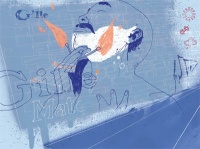Yesteryear’s ads
Somehow, defying the elements and the passage of time, a few fading wall signs of long-gone eras are still with us. David Bernstein ponders the paradoxes they present

’There stands the ghost of a great name,’ wrote Lucan, the Roman poet. He was referring to Pompey. Not the football club, but the general who also lost regularly – to Julius Caesar. Lucan’s invocation came to mind after I attended, at the Institute of Practitioners in Advertising, the launch last month of Ghostsigns, the new archive housed by the History of Advertising Trust. The progenitor is Sam Roberts, who six years ago confronted fading ads painted on walls near his north London home. He captured them on camera and sought, via sites such as Flickr, others to assist him in photographing, researching and archiving what he terms as ’the last survivors of this fading advertising medium’.
His enthusiasm was in evidence at the launch. The archive now comprises some 600 items, sufficient for Roberts to construct a narrative and analysis of this forgotten craft. Supporting him are both Hat and sponsor Rank Hovis (whose artefacts are still visible on walls across the UK).
Roberts regards ghostsigns as ’a neglected part of our cultural history’. The archive helps remedy that and fills in gaps in the history of not just signage, but advertising and marketing too. For old signs provide more than just a window into a past age. The recent activity has enabled the medium (in Roberts’ words) ’to question the present’. There is both continuity and discontinuity here. Yes, the artefacts are faded and the window reveals dead brands (Bile Beans, Turog bread, Black Cat cigarettes) and ’a different time when smoking benefited your throat and people took their fountain pens to be repaired’.
But, at the same time, the collection breathes evidence of lasting brands: Hovis, Gillette, Twinings, Nestlé, Boots. Great names indeed. The reasons for the durability of the remaining signs are varied: less exposure to weathering, re-emergence as a result of subsequent building work, being covered by a billboard, and the addition of white lead to the paint. Durability was an accepted fact: contracts were measured in years. New advertisers might, however, paint over out-of-contract signs providing an intriguing glimpse into a neverland of fused products. Gillette matches, for instance, is not a weird brand extension, but the accidental collage of Gillette razors and Criterion matches.
Media buying of yesteryear questions the present. ’Think national. Act local’ could have been a strapline for the Hovis strategy. The name of the local baker would be associated with the brand on the wall by the bakery. The sign for the Waterman pen would be painted alongside one for the outlet, fountain pen specialist Walker Brothers. With the growth of the railways key sites by stations were used, visible to passengers.
Another paradox has arisen, with a move originating in 2007 and prompted by public and media interest, to have ghostsigns protected as with listed buildings. Archiving is one thing, reviving and refreshing is something else. As Roberts writes in the current issue of The Ephemerist, ’While the signs would have received fresh coats of paint when they served a genuine functional purpose, there is a superficiality reapplying the paint when the sign is devoid of this purpose.’ However, he can console himself with a fact that his research has unearthed: when old designs are painted over, the later manifestation fades first, revealing the ghost.
With Hat’s co-operation the archive will be secure, professionally looked after and free to access (at www.hatads.org.uk). Roberts, meanwhile, still seeks to enlist collectors with cameras to augment the archive. Kindred spirits, you might say.
David Bernstein was founder of The Creative Business and is a creative consultant
-
Post a comment




